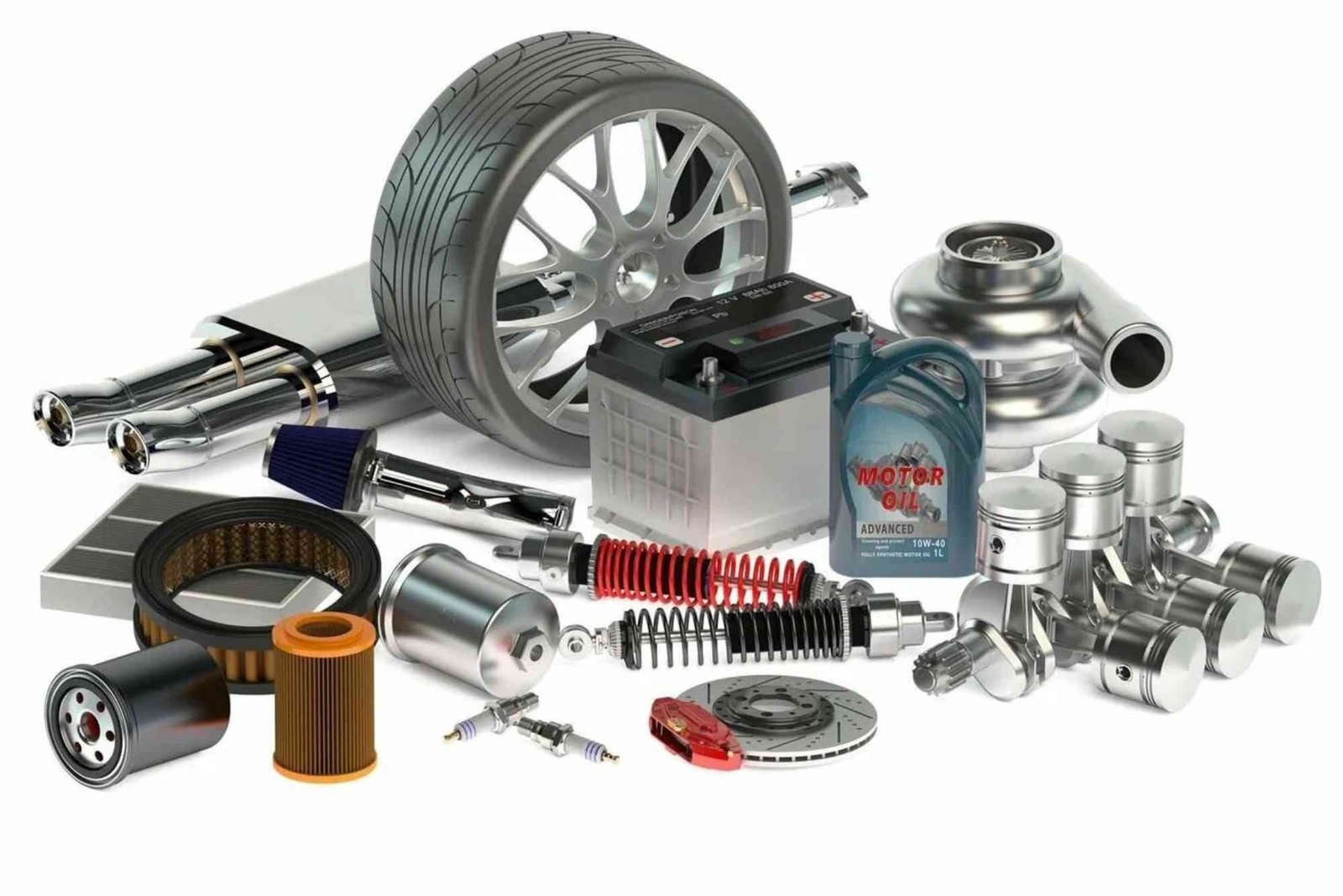Introduction
Starting an automobile spare parts business in India can be a highly profitable venture, especially with the country’s booming automotive market. Millions of vehicles are sold and serviced each year, which drives consistent demand for spare parts and accessories. Whether you are interested in supplying car parts, two-wheeler components, or heavy vehicle spares, understanding how to set up and manage this business properly is essential. This detailed guide will explain how to begin an automobile spare parts business in India, including market research, investment planning, legal requirements, sourcing, and effective marketing strategies to ensure long-term success.
India’s automobile industry is among the largest in the world. With rapid urbanization and increased vehicle ownership, the need for reliable spare parts suppliers is growing daily. From small repair shops to large authorized service centers, every part of the supply chain depends on spare parts availability. Therefore, starting a business in this sector not only promises financial rewards but also provides a stable and scalable opportunity.
Understanding the Automobile Spare Parts Market in India
Before you jump into the business, it’s important to understand the structure of India’s automobile spare parts market. It can be divided into two main categories: the organized sector, which includes original equipment manufacturers (OEMs), and the unorganized sector, which deals with local, aftermarket, and duplicate parts. While OEM parts are often more expensive, the aftermarket sector provides affordable options and dominates much of the market, especially in rural and semi-urban areas.
A major factor that supports this industry’s growth is India’s expanding vehicle population. The government’s push toward electrification and infrastructure development further adds to the demand for components like batteries, brake systems, filters, and tires. As cars and two-wheelers age, the need for replacement parts increases — creating a steady customer base.
Steps on How to Begin an Automobile Spare Parts Business in India
Starting this business requires planning, research, and proper execution. Here’s a comprehensive breakdown of each stage:
Conduct Market Research
The first step in how to begin an automobile spare parts business in India is detailed market research. Understand the demand in your target area — are customers primarily using two-wheelers, four-wheelers, or commercial vehicles? Analyze your competitors, suppliers, and pricing structures. Identify the most frequently sold parts such as engine oil, filters, brakes, and batteries. Market surveys and competitor analysis help you find gaps you can fill with unique products or services.
Choose Your Business Model
You can start your spare parts business in several ways. You might open a physical retail store, launch an online shop, or run a hybrid model combining both. Retail stores work best in areas with heavy vehicle traffic or near automobile repair hubs. Online stores, on the other hand, help you reach customers across the country and operate with lower overhead costs. A hybrid approach often provides the best results by combining local trust with national reach.
Prepare a Business Plan
Your business plan should include investment estimates, supplier networks, location strategy, and marketing approaches. Determine your initial inventory cost, warehouse needs, and operating expenses such as rent, staff salaries, and utilities. It’s also wise to project expected profits and a break-even timeline. Having a clear business plan will help you attract investors or apply for small business loans.
Obtain Required Licenses and Registrations
Compliance with legal and regulatory frameworks is vital. You will need to register your business as a sole proprietorship, partnership, or private limited company under the Companies Act. Additionally, obtain GST registration to manage taxation efficiently. A trade license from your local municipal authority and a business bank account are also mandatory. If you plan to import spare parts, ensure you have an Import Export Code (IEC) from the Directorate General of Foreign Trade. For more details on import processes, you can Learn more.
Find Reliable Suppliers and Manufacturers
Your success largely depends on the quality and reliability of your suppliers. Partner with trusted OEMs and reputable aftermarket manufacturers. If possible, visit factories or wholesale markets to verify the authenticity of products. In India, places like Delhi’s Kashmere Gate, Mumbai’s Opera House, and Chennai’s automobile hubs are known for large wholesale networks. Establishing long-term relationships with suppliers will help you negotiate better prices and maintain consistent inventory.
Select an Ideal Location
Location plays a critical role in this business. Choose a space near vehicle workshops, garages, or industrial zones to ensure regular footfall. Ensure there’s enough room for display racks and storage. Accessibility and visibility are also key factors — being near main roads or auto repair clusters enhances your business exposure and convenience for customers.
Build Inventory and Manage Stock
Maintaining an adequate stock of fast-moving spare parts is essential. Focus on frequently replaced items such as filters, clutch plates, brake pads, spark plugs, and lights. Implement inventory management software to monitor sales trends, reorder levels, and stock rotation. Digital tools not only prevent overstocking but also help track profitability and customer preferences.
Hire Skilled Staff
Qualified and knowledgeable staff can make a big difference in customer satisfaction. Employ salespersons who understand automobile parts, can identify product compatibility, and provide quick assistance. Additionally, having a store manager or technical expert ensures smooth day-to-day operations and strengthens customer trust.
Promote Your Business
Marketing is crucial for attracting customers and building brand awareness. Utilize both offline and online channels. Distribute flyers, install attractive signboards, and collaborate with local garages. At the same time, create an online presence through social media, Google My Business, and e-commerce platforms. You can also publish informative articles like How To Start Automobile Spare Parts Business In India to increase your brand authority.
Offering special discounts, warranty services, and delivery options can help you stand out in a competitive market. Moreover, launching a user-friendly website where customers can browse products and place orders adds credibility and convenience.
Provide Excellent Customer Service
Customer service is a critical aspect of retaining buyers. Respond promptly to queries, ensure timely deliveries, and handle complaints professionally. A positive customer experience encourages repeat business and referrals, which are key for sustainable growth. Remember, loyal customers are more valuable than one-time buyers.
Investment Required for Starting the Business
The initial investment in an automobile spare parts business in India depends on the scale of operations. A small retail store may require between ₹5–10 lakhs, while a medium-sized outlet can need ₹15–25 lakhs, including inventory, rent, licenses, and marketing costs. The investment for an online store might be slightly lower, but maintaining logistics and inventory still requires capital. Having a financial cushion for at least six months of operation ensures stability during the setup phase.
Profit Margin in the Automobile Spare Parts Business
Profit margins vary depending on the type of parts sold and your supply chain efficiency. Generally, OEM parts offer margins between 15% and 25%, while aftermarket parts can go up to 40%. Accessories and lubricants may provide even higher margins. With the right marketing strategy and reliable supply chain, your business can achieve consistent profitability within the first year.
Challenges in the Spare Parts Business
Every business faces challenges, and this one is no exception. Counterfeit products, fluctuating prices, and supply delays are common issues. Maintaining quality standards and building trust with your customers is the best way to overcome these obstacles. Another challenge is the rapid shift toward electric vehicles (EVs), which use different components than traditional vehicles. Adapting to this change early will help you stay relevant in the coming years.
Future Scope of the Automobile Spare Parts Business in India
The future of the automobile spare parts industry in India looks promising. The rise of EVs, increasing road connectivity, and growing vehicle ownership all point toward long-term growth. Moreover, with the advancement of online commerce, spare parts sellers can now reach customers across cities and states. Many entrepreneurs are also exploring export opportunities to countries in Africa and the Middle East, further expanding their business potential.
For deeper insights on accounting and managing spare parts, check out this Related Automobile article.
FAQs
How much investment is needed to start an automobile spare parts business in India?
A small-scale business can start with ₹5–10 lakhs, while a medium-sized shop may require ₹15–25 lakhs, depending on location and inventory size.
Is selling automobile spare parts profitable in India?
Yes, it’s highly profitable due to constant vehicle maintenance needs and the growing number of vehicles on the road.
Do I need a license to sell automobile spare parts?
Yes, you need GST registration, a trade license, and if you import products, an Import Export Code (IEC).
Where can I buy spare parts in bulk for resale?
Wholesale automobile markets in Delhi, Mumbai, and Chennai are popular choices. You can also partner directly with manufacturers for better deals.
Can I sell spare parts online in India?
Absolutely. Many businesses now operate online through their own websites or marketplaces like Amazon and Flipkart, offering convenience and wider reach.
Starting an automobile spare parts business in India is not just about selling components — it’s about providing reliability, trust, and long-term value to vehicle owners. With the right planning, supplier partnerships, and customer service, you can build a sustainable and profitable enterprise. Whether you choose to operate offline, online, or both, the key lies in consistent quality, transparent pricing, and adaptability to market trends.












